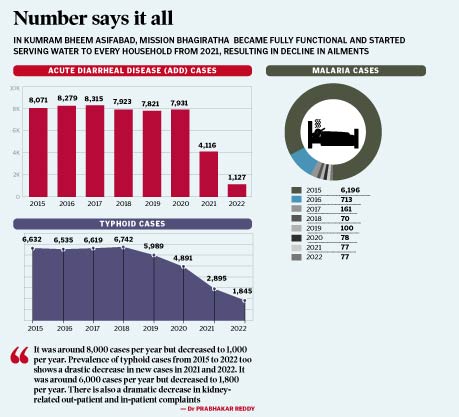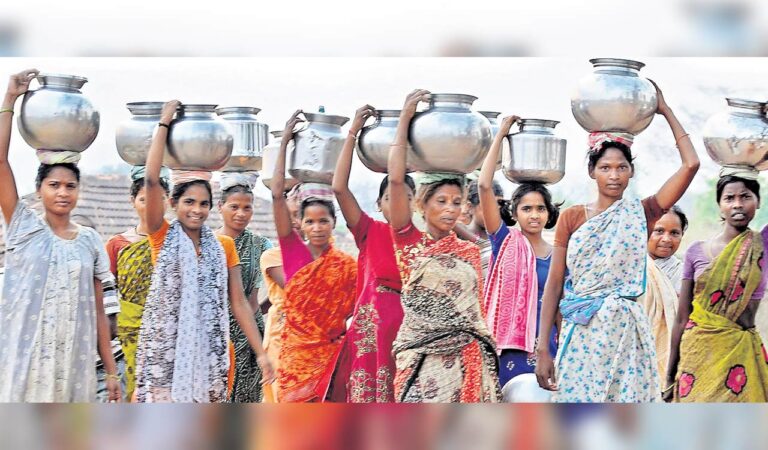Mission Bhagiratha not only ended flooding for tribal people but also controlled water borne diseases
UPDATED – 12:18AM, SUNDAY – 4/12/22

Hyderabad: Not more than four years ago, the interior of Kumram Bheem Asifabad used to wake up to a vision of tribal women walking for kilometers in long lines, water jugs in hand, across hilly terrain, all for a drink of water water.
Similar long lines, but slightly different ones, used to be seen outside the 22 primary care centers and upper primary care centres, where people with related illnesses drank water again and lined up for treatment.
From typhoid fever, to acute diarrheal disease and kidney infections, to malaria and dengue, mosquitoes thrived in primitive methods of water storage employed by tribes whose lives largely revolved around water.
Despite the tributaries of the Pranahita and Godavari rivers, low literacy and superstition rates coupled with a lack of drilled or agricultural wells mean that people in the village have to rely on deep wells, which have hard water.
According to a study by District Medical and Health Officer Dr. T Prabhakar Reddy, drinking hard water has resulted in several outbreaks of waterborne diseases and high rates of typhoid and acute diarrheal disease (ADD), in addition to kidney infections from drinking hard water. This story is repeated every year until 2020. In the past two years, however, there has been a dramatic shift.
“If we compare the annual prevalence of acute diarrheal disease cases from 2015 to 2022, there is a sharp decrease in new cases in 2021 and 2022. About 8,000 cases per year, but reduced to 1,000 cases per year. Typhoid fever from 2015 to 2022 Case prevalence also shows a sharp decrease in new cases in 2021 and 2022. About 6,000 cases per year, but reduced to 1,800 cases per year. Kidney-related outpatient and inpatient complaints also decreased substantially,” said Dr Prabhakar Reddy in the study .
So what happened after 2020?
“The state government has introduced safe drinking water through Mission Bhagiratha to minimize groundwater usage and utilize surface water and provide safe drinking water to people in rural areas. In Kumram Bheem Asifabad, the mission will be fully operational from 2021 and Start providing water to every household,” the study states.
There is another angle to this shift, with cases of vector-borne diseases such as malaria and dengue also falling.
“Due to water scarcity, villagers were forced to store water for long periods of time, resulting in widespread mosquito breeding, which in turn led to thousands of cases of malaria and dengue fever,” the study said.
After Bhagiratha’s sermon, each household received 100 liters of high-quality drinking water per person per day, reducing the burden of water storage in household basins, buckets and mini water tanks, thereby eliminating mosquito breeding grounds to a large extent.
“Apart from this, the preventive measures taken by the health sector, Panchayat Raj and the rural water sector have collectively reduced malaria and dengue cases in the region,” the study said, adding that, most importantly, Mission Bhagiratha has now ensured that even Without single households in the area, women or girls are forced to walk kilometers to fetch drinking water.
“The time spent fetching water has been significantly reduced, thereby enabling women to engage in other productive and economic activities,” it said.

